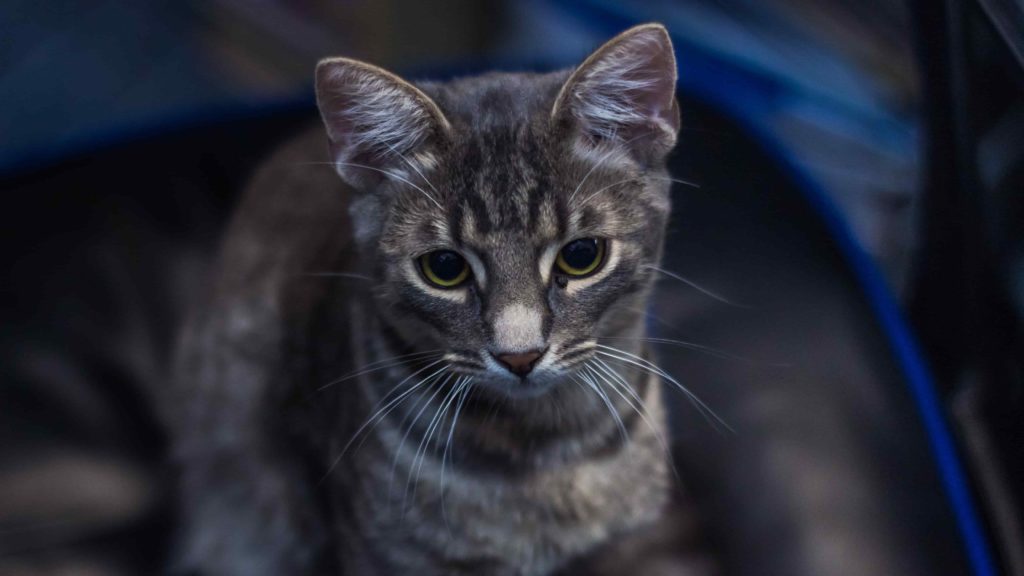Cat diseases: do you know how to spot them? Before you can treat your pet, you need to be able to detect its suffering. However, determining whether a cat is ill is not so easy, as these fur balls are secretive by nature. In fact, their attitude at any given moment may suggest that they’re in trouble, when in fact they’re just trying to get your attention. In other words, you need to be particularly attentive to your cat’s smallest details, even the most insignificant ones at times, to be able to detect their illnesses.
Always bear in mind that your wonderful cats are likely to feel unwell and won’t tell you so. Detecting a cat’s illnesses may not be easy, but once you know what’s wrong with your cat, you’ll be able to act more easily and effectively.
In this article, discover our tips to help you detect your cat’s illnesses.

How to detect cat diseases
Just like human beings, your felines also fall ill, and to help them, there are various treatments adapted to each illness. However, if you notice any of these signs in your kitty, you’ll need to act quickly.

The general condition of your cat and its coat
If you notice that your cat is more distant and less active than in previous days, it’s a good idea to scrutinize its physical appearance. Indeed, if he doesn’t play like he used to or if he’s distant from you, then consider the possibility of instability. What’s more, a sick cat prefers to isolate itself.
On the other hand, a dirty, unkempt coat with redness or parasites is synonymous with discomfort. If your cat has a dirty coat, you’ll see him scratching all the time or pulling out his hair. In this case, you’d better consult a veterinarian as soon as possible for effective treatment.
If your cat is sleeping less or looking more tired, it could also be ill.
Weight and appetite loss
Unless you’ve changed your cat’s diet, there’s no reason why he shouldn’t eat as usual. Similarly, if your cat has a loss of appetite, you shouldn’t take it lightly. Loss of appetite may conceal an illness. However, loss of appetite and weight loss generally go hand in hand. As your feline loses its appetite, it will also lose weight. It is therefore necessary to seek advice in order to find the root of the problem and resolve it as quickly as possible.
If your cat consumes excessive amounts of water, this could also be evidence that he’s not doing well. Polydipsia (excessive water consumption), like dehydration, is a problem to be taken very seriously. So don’t delay in visiting a feline health specialist.
On the other hand, you can check your pet’s level of dehydration by gently pulling and releasing the skin on its neck. If it comes back into place quickly enough, all is well. If not, beware! For weight loss, if you can’t see it with the naked eye, weigh your cat regularly and make comparisons to be sure.

Cat fever and vomiting
Take your pet’s temperature at anal level. It should be between 38°C and 39°C. Below 38, your cat is hypothermic, requiring immediate and urgent attention.
As for vomiting, it’s normal for him to regurgitate what he’s eaten. In fact, it’s the frequency with which he does it that should get your attention and prompt you to act fast. It may have been poisoned or simply intoxicated.
Feline eyes and mouth
Have you noticed any dirt around the corners of your eyes? The appearance of a third eyelid? Runny eyes? These are just a few of the details to look out for when reassuring yourself about your cat’s health.
He may have digestive problems, and his bad breath puts you in the way. In the same way, an abscess or pimples in the mouth can cause a feline to refuse food. This anorexia will therefore be due to the pain he feels. By consulting a vet, you’ll be helping to make your companion less sad.
Behavior and breathing
Indicators of poor behavior include sudden aggression, frequent meowing and restlessness. If he won’t let you approach him, occasionally scratches you, or becomes distant with you, it’s a sign that something’s wrong. It’s up to you to remedy the problem before it gets any worse.
What’s more, if your cat has difficulty breathing normally, coughs and sneezes a lot, a consultation is advisable. It may have contracted a respiratory infection such as asthma, pneumonia, laryngitis, pulmonary edema, etc. You may also notice whistling or snoring during your cat’s breathing sequences. In such cases, it’s best to entrust the child to a specialist to protect him or her from possible complications.
Detecting cat diseases is no easy task. So you’ll need to be really meticulous when observing your cat to be able to spot its illnesses. Depending on his environment, your companion may be more aggressive than usual. He can also trick you into thinking something is wrong.
Nevertheless, diligent observation of multiple elements will lead you to be able to detect its problem in order to better solve it. A veterinarian remains the first-line specialist you’ll need to consult most of the time you have a problem with your kitty. So don’t hesitate to contact him. Your companion’s health depends on it. As we often say, prevention is a cure, so take your time and put your cat in a safe place!
However, if you’d like to know how to treat cat illnesses, don’t hesitate to read our article: How to treat cat illnesses !





